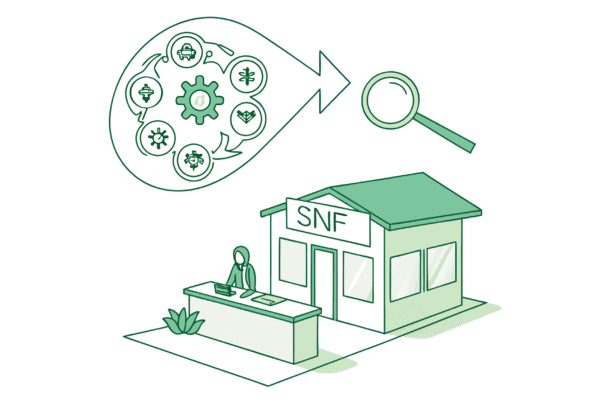Selling your primary care practice is one of the most significant financial decisions you’ll ever make. The Miami market presents a unique combination of high demand and sophisticated buyers, making preparation the key to maximizing your value. This guide provides a clear overview of the market landscape, valuation principles, and the key steps you’ll need to navigate for a successful and profitable transition.
Curious about what your practice might be worth in today’s market?
Market Overview
The environment for selling a primary care practice in Miami is strong, driven by a convergence of powerful factors. Understanding these dynamics is the first step toward positioning your practice for a premium valuation. Your location in a growing metropolitan area with high demand for healthcare services is a significant asset.
Strong Local Demand
Miami’s growing and diverse population, combined with a local and national shortage of primary care physicians, places established practices like yours in a favorable position. Buyers are actively seeking well-run practices with a stable patient base to meet this unmet demand. This fundamental supply-and-demand imbalance works in your favor as a seller.
The Modern Buyer Landscape
Today s market is not just about one physician selling to another. It has become far more active and competitive. Private equity firms and large healthcare systems are showing significant interest in acquiring primary care practices in Florida. This C-suite level of interest can lead to higher valuations, but it also means you will be negotiating with highly experienced dealmakers.
Key Considerations
Beyond the favorable market conditions, buyers will look closely at the internal health of your practice. Your preparation in a few key areas can dramatically impact their interest and the offers you receive. The two most important areas are your financial readiness and your operational strength.
You must have organized and transparent financial records, including several years of profit and loss statements, balance sheets, and tax returns. Sophisticated buyers will analyze this information in detail. Equally important are your operations. A practice with an efficient EHR system, positive patient reviews, experienced staff, and a clear path toward managing patient outcomes through value-based care models is far more attractive than one that simply manages volume.
Market Activity
The interest from private equity is not just a trend. It is actively shaping the M&A landscape for primary care. This can be a major advantage for you, but only if you understand how to navigate it. For a prepared seller, this increased activity creates a significant opportunity.
Here are three key results of this trend:
- Increased Competition. With more buyers pursuing fewer high-quality practices, a competitive environment emerges. This gives you, the seller, leverage to negotiate better terms and a higher price.
- Higher Valuations. Competition naturally drives up prices. Practices that can demonstrate stable cash flow, a strong team, and potential for growth are commanding premium valuations that were less common just a few years ago.
- More Complex Deals. Private equity buyers use sophisticated deal structures that can include earnouts and equity rollovers. Understanding these structures is a must for protecting your interests and maximizing your total proceeds.
Timing your practice sale correctly can be the difference between average and premium valuations.
The Sale Process
Many owners are surprised to learn that selling a practice can take 12 months or even longer from start to finish. That is why we tell our clients that the best time to start preparing is two to three years before you plan to exit. The process generally follows three major phases. It begins with preparation, which includes a formal valuation and organizing all your financial, corporate, and operational documents into a confidential package. The next phase is confidentially marketing the practice to a curated list of qualified buyers and negotiating offers to secure the best terms.
The final and most intense stage is due diligence and closing. This is where the buyer verifies every aspect of your practice, from financial statements to regulatory compliance. Buyers are especially concerned about successor liability, meaning they want to ensure they aren’t inheriting any of your past debts or legal issues. Navigating this stage requires careful management and expert legal counsel to ensure a smooth transition to a successful closing.
The due diligence process is where many practice sales encounter unexpected challenges.
Valuation
How much is your practice really worth? While you may hear simple rules of thumb, like 0.5 to 0.7 times annual revenue, sophisticated buyers do not use them. They value your practice based on its cash flow, specifically its Adjusted EBITDA (Earnings Before Interest, Taxes, Depreciation, and Amortization). This figure normalizes your profit by adding back owner-specific or one-time expenses to show the true underlying profitability. A higher, more stable Adjusted EBITDA leads to a higher valuation.
This number is then multiplied by a figure that reflects your practice’s risk and growth profile. Factors like having multiple providers, a favorable payer mix, and using modern technology all lead to a higher multiple. The difference can be significant, as shown below.
| Metric | Amount | Why It Matters |
|---|---|---|
| Reported Net Profit | $400,000 | The starting point, but not the whole story. |
| Owner Adjustments | +$150,000 | Adds back above-market owner salary or perks. |
| Adjusted EBITDA | $550,000 | This is the key number buyers focus on. |
| Potential Valuation | $2.75M – $3.85M | Based on a 5.0x-7.0x multiple of Adjusted EBITDA. |
A comprehensive valuation is the foundation of a successful practice transition strategy.
Post-Sale Considerations
The transaction closing date is not the end of the journey. Planning for what comes next is just as important as the deal itself. You need to consider the impact on your staff and legacy. A well-structured deal includes clear provisions for your employees and ensures the standard of care you established is maintained. You also need to define your future role. Many buyers want the selling physician to stay on for a transition period. This can be structured with an earnout or even an equity rollover, where you retain a stake in the new, larger company.
Finally, the tax implications of your sale are very important. The way a deal is structured has a major impact on your net, after-tax proceeds. Planning for this in advance with an advisor can save you a substantial amount of money. Thinking through these post-sale details beforehand ensures that the transition meets not only your financial goals but your personal ones as well.
Your legacy and staff deserve protection during the transition to new ownership.
Frequently Asked Questions
What makes the Miami market unique for selling a primary care practice?
The Miami market is unique due to its high demand driven by a growing and diverse population combined with a shortage of primary care physicians. This creates a favorable environment for sellers with well-run practices and stable patient bases. Additionally, Miami’s metropolitan setting attracts sophisticated buyers including private equity firms and large healthcare systems, which can drive higher valuations.
What financial documents should I prepare before selling my primary care practice?
You should organize and have transparent financial records including several years of profit and loss statements, balance sheets, and tax returns. These documents are critical as sophisticated buyers will analyze them in detail to assess the financial health and profitability of your practice.
How do private equity firms affect the sale of primary care practices in Miami?
Private equity firms are increasingly interested in acquiring primary care practices, contributing to a more competitive market. This competition among buyers can result in higher valuations and better terms for sellers. However, they also bring more complex deal structures such as earnouts and equity rollovers, requiring careful negotiation and understanding.
What is Adjusted EBITDA and why is it important in valuing my practice?
Adjusted EBITDA stands for Earnings Before Interest, Taxes, Depreciation, and Amortization, adjusted for owner-specific or one-time expenses to reflect true underlying profitability. It is important because buyers focus on this number to evaluate cash flow and profitability. A higher and more stable Adjusted EBITDA leads to a higher valuation, typically multiplied by a factor reflecting risk and growth potential.
What should I consider in the post-sale phase after selling my primary care practice?
Post-sale considerations include planning for the impact on your staff and legacy, potentially staying on during a transition period through earnouts or equity rollovers, and addressing the tax implications of the sale. Proper planning ensures a smooth transition, protects your employees, maintains the standard of care, and aligns the sale outcome with your financial and personal goals.



